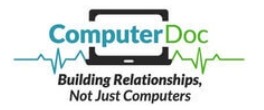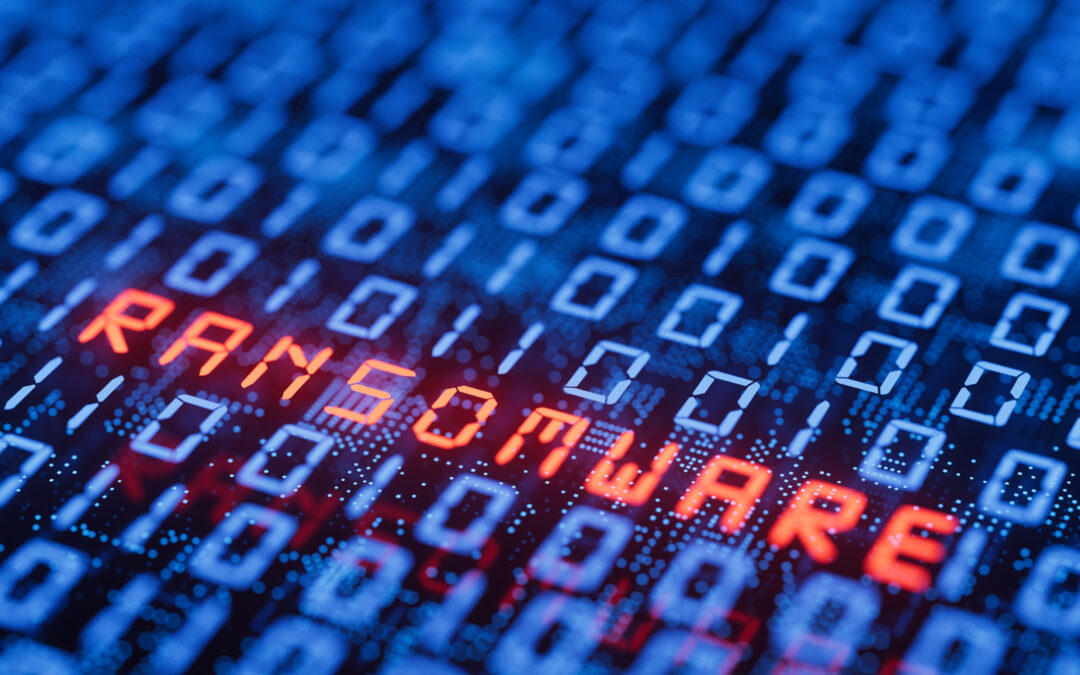Most ransomware attacks are initiated by organized crime, according to Clear Data. Tony Soprano, anyone? When you think about it, it’s really no different than a shakedown. But instead of Soprano strong-arming you in an alley to extort your money, cybercriminals hijack your data right from the safety of your business or home. And they’re not stopping anytime soon.
By the time you take in your next three breaths, a new organization will become a victim of ransomware. That’s a new victim every 11 seconds, according to Cybersecurity Ventures.
And in 10 years, ransomware costs are estimated to continue skyrocketing 10 times the total of 2021, to nearly $265 billion, making ransomware one of the fastest growing cybercrimes. But that doesn’t mean you have to fall victim to the statistics. Here’s how you can identify and prevent ransomware attacks for your Charlotte business.
How Ransomware Attacks Take Place
While no two attacks are the same, the way they get into your systems is similar:
- An email from a scammer hits your inbox. It demands your attention because it resembles an invoice or notice from a familiar brand.
- Once you click on the suggested link or download a document, a silent infection starts. The user’s files are then encrypted.
- Ransom is demanded. The user is given payment instructions and deadlines, usually involving cryptocurrencies, like Bitcoin.
- Result: Your business is faced with locked files or systems, encrypted files and/or destruction of your files.
Once a ransomware infection starts, business owners are forced to suffer long-lasting consequences like extended downtime, loss of funds from cleanup and compliance fees and a loss of trust amongst investors and consumers.
Early Detection is Critical
If preventative, 24/7 ransomware protection and monitoring isn’t maintained, your business could fall victim without even noticing. By not having proper detection tools in place and a plan to thwart malicious activity in the earliest stages, you run the risk of greater damage.
According to Cisco, the average detection time for a breach is over six months. The additional time allows cybercriminals to identify critical data, distribute it for profit on the black market and continue extracting further data as time passes. It also opens the door for multiple extortion points to occur through the sale of your private data, the encryption of files and access to new networks and data through exposed information.
Like auto or home insurance, you don’t want to wait until you need ransomware protection to establish it.
Don’t Pay the Ransom
Three out of four organizations have experienced a cyberattack in the past 12 months, according to a report by Cisco. And recovery is much more expensive than the ransom.
If recovery costs so much, then it makes sense to pay the ransom, right?
Wrong. The research says you’d be wasting your money.
According to Forbes, an overwhelming 92 percent of those who pay ransom requests don’t get their data back. The best strategy is to deny ransomware attackers payment and allow cybersecurity experts to take control of the situation.
Through the knowledge of a trusted managed security partner, proper encryptions, continuity plans and cybersecurity training, you can avoid ransomware attacks in the first place. Here are a few suggestions:
- Encrypt Your Data
With the right preventative data security, you’ll be able to stop potential threats from getting into your data in the first place. Tools like multifactor authentication, controlled access and various other security measures can not only prevent breaches but alert your business sooner to potential threats. This allows for simple, proactive measures to be taken, rather than reactive scrambling down the line. - Train your Team
94 percent of malware, including ransomware, is delivered by email, according to CSO Online. And social engineering is the easiest way into your network for hackers nowadays. With cybersecurity training, your employees can learn ransomware prevention, discovering how to identify common social engineering ploys that come through their inbox before they can claim an unsuspecting victim. - Protect Endpoints
If you have team members who take their work away from the office, you’ll want to take extra precautions. Public and high traffic areas are prime targets for ransomware attackers to try and gain access to sensitive data. You can stay secure on the go by implementing VPNs. Most corporate users don’t utilize a VPN when they’re using devices outside of the office. With nearly three out of four organizations having experienced a compromise with a roaming user, it’s crucial to get your team to understand the vulnerabilities they expose and stay diligent. Additionally, discouraging the use of personal devices and repeated passwords can provide a much-needed extra layer of security.
You Don’t Have to Become an Expert Overnight
At Computer Doc, we help you outmaneuver your ransomware opponents with proactive and comprehensive ransomware protection. Our advanced cybersecurity knowledge and services can help protect your team from ransomware without the added stress and time. We deliver airtight security, so you can focus on your business and rest assured that you have 360 degrees of protection.
To better understand how vulnerable, you are to ransomware attacks, request our security assessment today.




